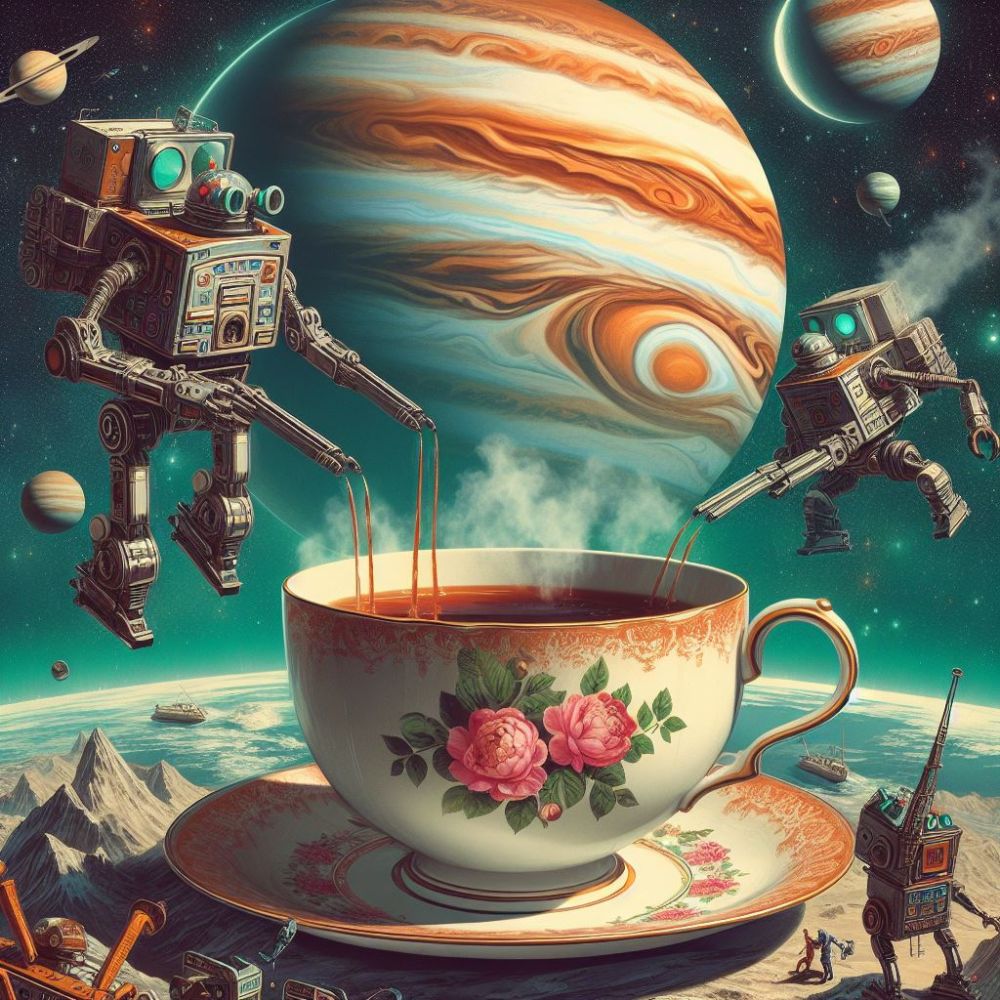Brownian motion
|
The design of organisations and products
|
Brownian motion
/ˈbraʊniən ˈməʊʃᵊn/ (n.)
The random movement of suspended particles resulting from their repeated collisions with each other.
The principle of generating small amounts of finite improbability by simply hooking the logic circuits of a Sub-Meson Brain to an atomic vector plotter suspended in a strong Brownian motion producer (say a nice hot cup of tea) were well understood.
It is said, by the Guide, that such generators were often used to break the ice at parties by making all the molecules in the hostess’s undergarments leap simultaneously one foot to the left, in accordance with the theory of indeterminacy.
Many respectable physicists said that they weren’t going to stand for this, partly because it was a debasement of science, but mostly because they didn’t get invited to those sorts of parties.
You will hear it said that the surface of the proverbial “nice hot cup of tea” tends to stillness only through the awesome force of entropy. The particles ricocheting this way and that in the liquid, colliding chaotically, and you only do not notice them because of the vast improbability that enough of the particles all move the same way at once.
In this sense, entropy is just a statement of basic probability: the larger the number of particles there are, the more scope there is for chaos.
The state of a system is considered “ordered” when there are only a few arrangements that could produce that state. A system is in a state of chaos when many arrangements could produce that state. There are far more ways for a system to be chaotic than ordered so systems if left alone, tend to towards disorder. That is, entropy.
states than ordered ones
That stable occupation of the cup is the state of maximum entropy towards which a random collection of molecules automatically tends. This is no more than the power of statistics over order; the number of recognisably “ordered” configurations of those atoms is so swamped by the colossal number of disordered configurations that the odds of an ordered configuration just never show up. It is logically possible for all the molecules in your cup of tea to spontaneously move to the right side of the cup at once, that is, just vanishingly unlikely. It is a “twenty-five sigma” event: you could wait millions of times the life of the universe, and it never happened once. But it could happen.
It couldn’t happen.
We glibly compare our cup of tea with the behaviour of truly independent events — rolled dice and flipped coins — to which, at the same level of probability, those things could happen , though if they did the competing possibility that the dice is loaded, or some trickery is afoot, drowns out that feeble signal. But that is a practical impossibility. Proving it out defeats our engineering measuring capacity, not to mention patience and longevity.
But with the Brownian motion of a nice hot cup of tea a spontaneous lurch of all particles in one direction at once is not just unlikely, it is impossible. The Brownian collisions that sends one molecule to the left must send another to the right. This is newton’s third law: the conservation of momentum. If, overall, the tea (as a non-Brownian liquid) is inert, then its innate Brownian motion will not change that. If it did, you would notice it.
For every molecule to go left at once defies the laws of physics. Physics requires interacting particles to move in offsetting directions. It is like snooker. Hence the emergent stability of a a stationary cup of tea.
Independent, “unintelligent” events that do not interact with each other tend to be normally distributed. Coins, dice.
Unintelligent events that do interact with each other tend to cancel each other out and will be evenly distributed.
Interdependent events — at least those propelled by the autonomous, self-aware animal minds don’t. They can avoid collisions. They can turn and run in the same direction as oncoming traffic. Tea molecules can’t jump out of the tea-cup at the same time. Participants in a securities market can and, from time to time, do.
According to Newton's third law of motion, for every action, there is an equal and opposite reaction. This principle ensures that the total momentum of an isolated system remains constant unless acted upon by external forces.
In the context of collisions between particles, if particle A experiences a force in one direction due to a collision, there must be an equal and opposite force on particle A' as a result of the same collision. This conservation of momentum holds true.
However, it's important to note that while the conservation of momentum is satisfied at the system level, the individual trajectories of particles are still influenced by random thermal motion, Brownian motion, and the probabilistic nature of quantum mechanics. Therefore, while the overall momentum of the system is conserved, the specific paths and velocities of individual particles are subject to statistical uncertainty.
In other words, while it might be improbable for all particles to collectively move in the same way at the same time due to the random nature of individual particle motions, the conservation of momentum ensures that the sum of all these individual motions complies with the laws of physics. So, at a macroscopic level, momentum is conserved even if the individual trajectories are unpredictable.
Yes, you are correct. If we consider a system of randomly colliding particles subject to the laws of physics, including the conservation of momentum, it would be logically impossible for all particles to move in the same direction at the same time. The inherent randomness and probabilistic nature of particle motion, combined with the principles of physics, make such a scenario logically impossible.
